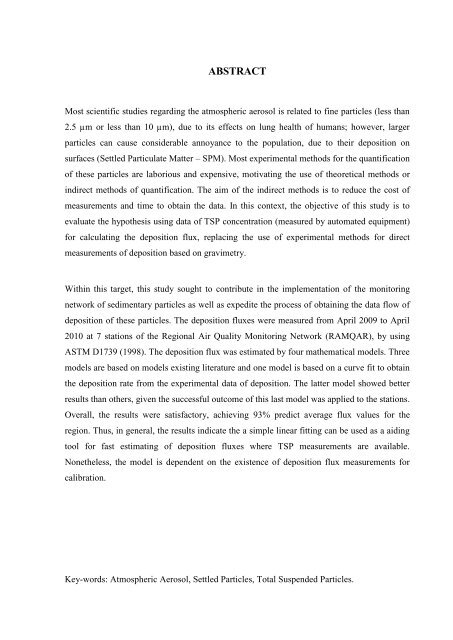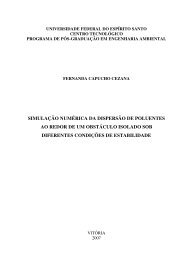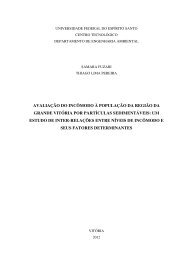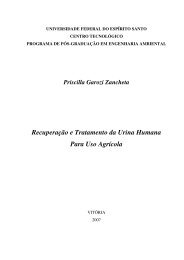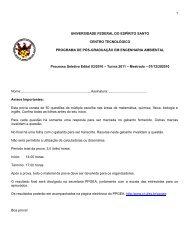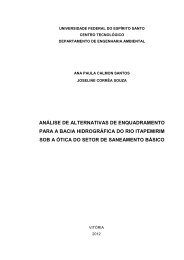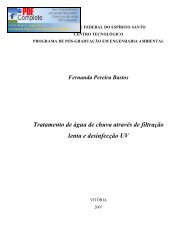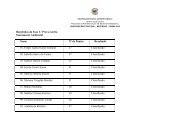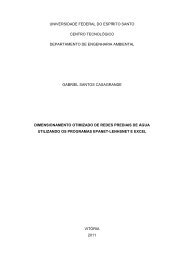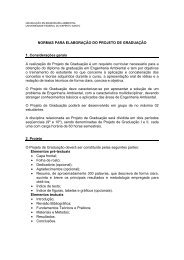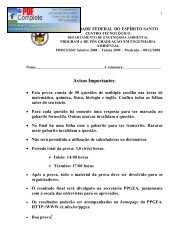Dissertação - Centro Tecnológico / UFES - Universidade Federal do ...
Dissertação - Centro Tecnológico / UFES - Universidade Federal do ...
Dissertação - Centro Tecnológico / UFES - Universidade Federal do ...
You also want an ePaper? Increase the reach of your titles
YUMPU automatically turns print PDFs into web optimized ePapers that Google loves.
ABSTRACT<br />
Most scientific studies regarding the atmospheric aerosol is related to fine particles (less than<br />
2.5 µm or less than 10 µm), due to its effects on lung health of humans; however, larger<br />
particles can cause considerable annoyance to the population, due to their deposition on<br />
surfaces (Settled Particulate Matter – SPM). Most experimental methods for the quantification<br />
of these particles are laborious and expensive, motivating the use of theoretical methods or<br />
indirect methods of quantification. The aim of the indirect methods is to reduce the cost of<br />
measurements and time to obtain the data. In this context, the objective of this study is to<br />
evaluate the hypothesis using data of TSP concentration (measured by automated equipment)<br />
for calculating the deposition flux, replacing the use of experimental methods for direct<br />
measurements of deposition based on gravimetry.<br />
Within this target, this study sought to contribute in the implementation of the monitoring<br />
network of sedimentary particles as well as expedite the process of obtaining the data flow of<br />
deposition of these particles. The deposition fluxes were measured from April 2009 to April<br />
2010 at 7 stations of the Regional Air Quality Monitoring Network (RAMQAR), by using<br />
ASTM D1739 (1998). The deposition flux was estimated by four mathematical models. Three<br />
models are based on models existing literature and one model is based on a curve fit to obtain<br />
the deposition rate from the experimental data of deposition. The latter model showed better<br />
results than others, given the successful outcome of this last model was applied to the stations.<br />
Overall, the results were satisfactory, achieving 93% predict average flux values for the<br />
region. Thus, in general, the results indicate the a simple linear fitting can be used as a aiding<br />
tool for fast estimating of deposition fluxes where TSP measurements are available.<br />
Nonetheless, the model is dependent on the existence of deposition flux measurements for<br />
calibration.<br />
Key-words: Atmospheric Aerosol, Settled Particles, Total Suspended Particles.


